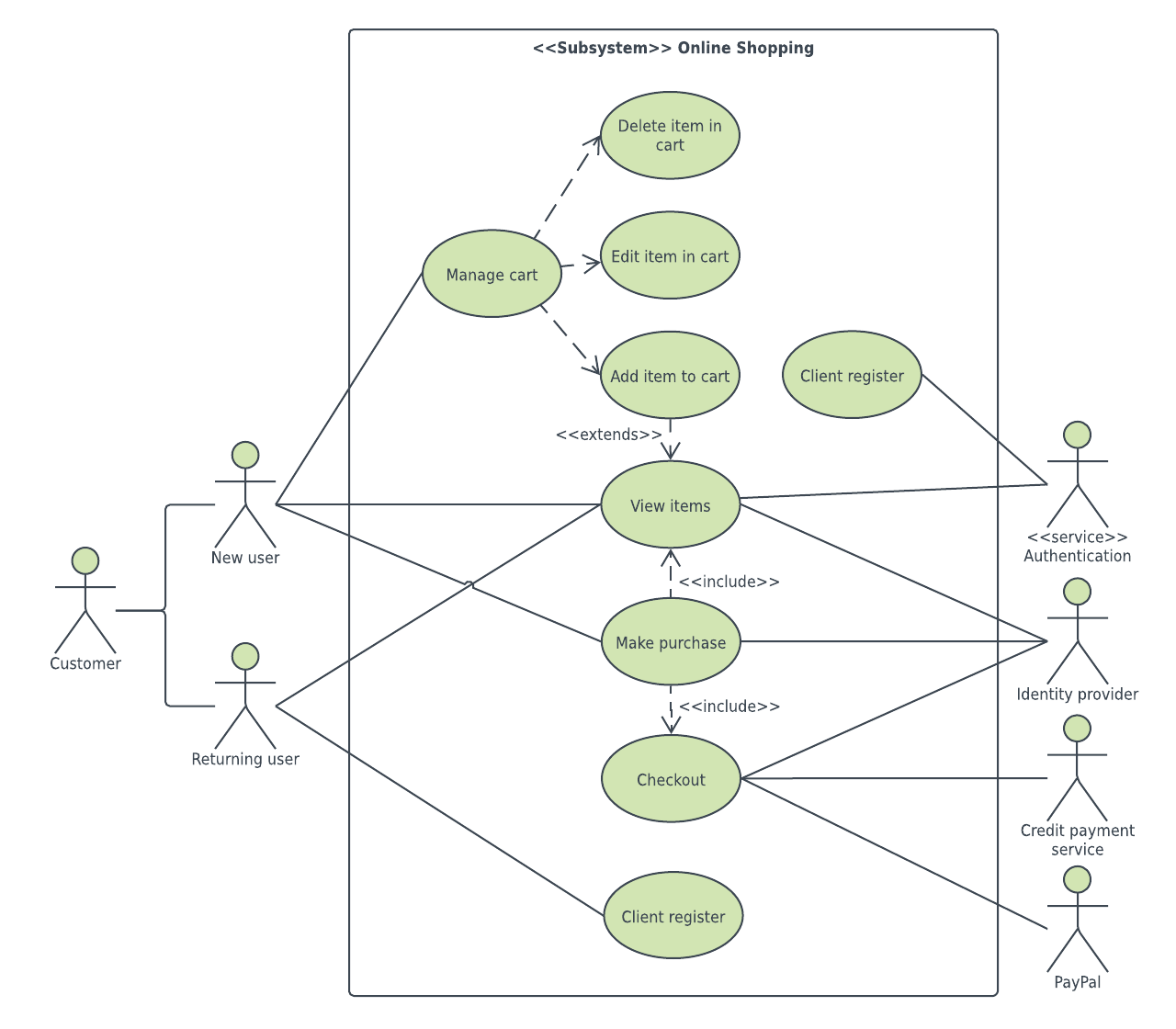

What is the purpose of a use case diagram? All the activities and interactions should be referenced in the chart, as they are vital elements in reaching goals. Goals mark the desired result of a use case diagram. Sometimes referred to as a scenario, the system can be defined as a specific set of actions that take place between actors and the software. They can be individuals, organizations, or other software that is in contact with your system. ActorsĪctors are representing the users that interact with your system. Typically, a use case diagram will include three main constituents: 1. What are the main components of a use case diagram template? Discover all of them in Stencils, in the Use Case section. As these are crucial elements when building a use case diagram, they have already been incorporated into our template. This type of diagram can only be used with a set of specific stencils, such as diagram connectors. What is a use case diagram?Ī UML use case diagram comprises data sets that describe the many ways in which users’ may choose to interact with new software solutions. Learn everything you need to know about how to use this template best to ensure a good start for all your projects. If the relationship between the diagram elements is one-to-one, then simply leave it blank.With a use case diagram template, you will be able to build a comprehensive summary detailing all of your customers’ interactions with a system. It’s optional, but sometimes useful to add the standard UML notation for multiplicity: 1, 1.n, or *. You can also show inheritance on both actions and actors with the standard UML notation of a connector with an open arrowhead. In my example, you can Mark a habit as done, or Mark a habit as done AND add a comment in the same action. When one action is an extension of another action (or a more specific version of that action), use extend to show that relationship.So, the Update the habit history action is dependent on the other actions. But you wouldn’t update the habit history without one of the four actions: Add a habit, Delete a habit, Mark a habit as done or Add a comment. For example when you Add a comment in the habit tracker app, you must Update the habit history. When one action is dependent on another action, use an include relationship.You can show specific relationships between the actions (or classes and methods) with include and extend. Use case diagrams can show information that makes it easier to program


 0 kommentar(er)
0 kommentar(er)
